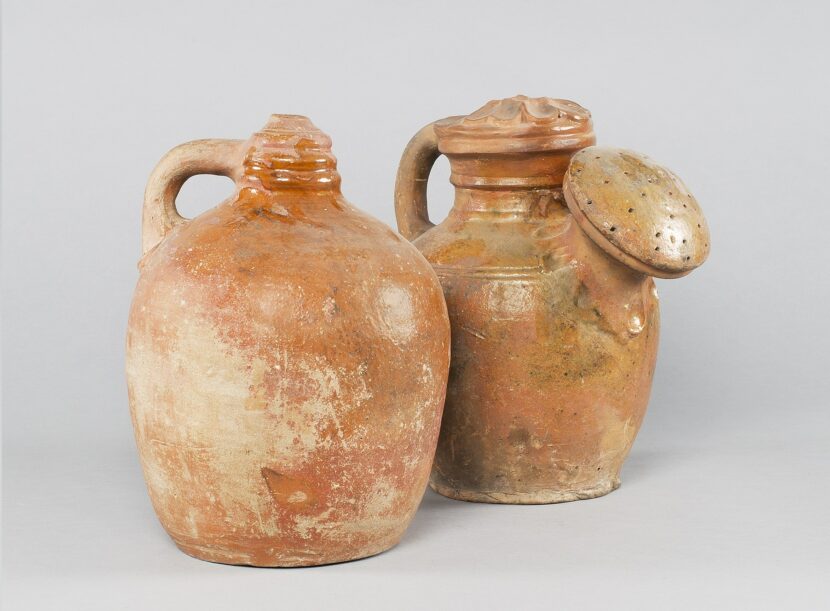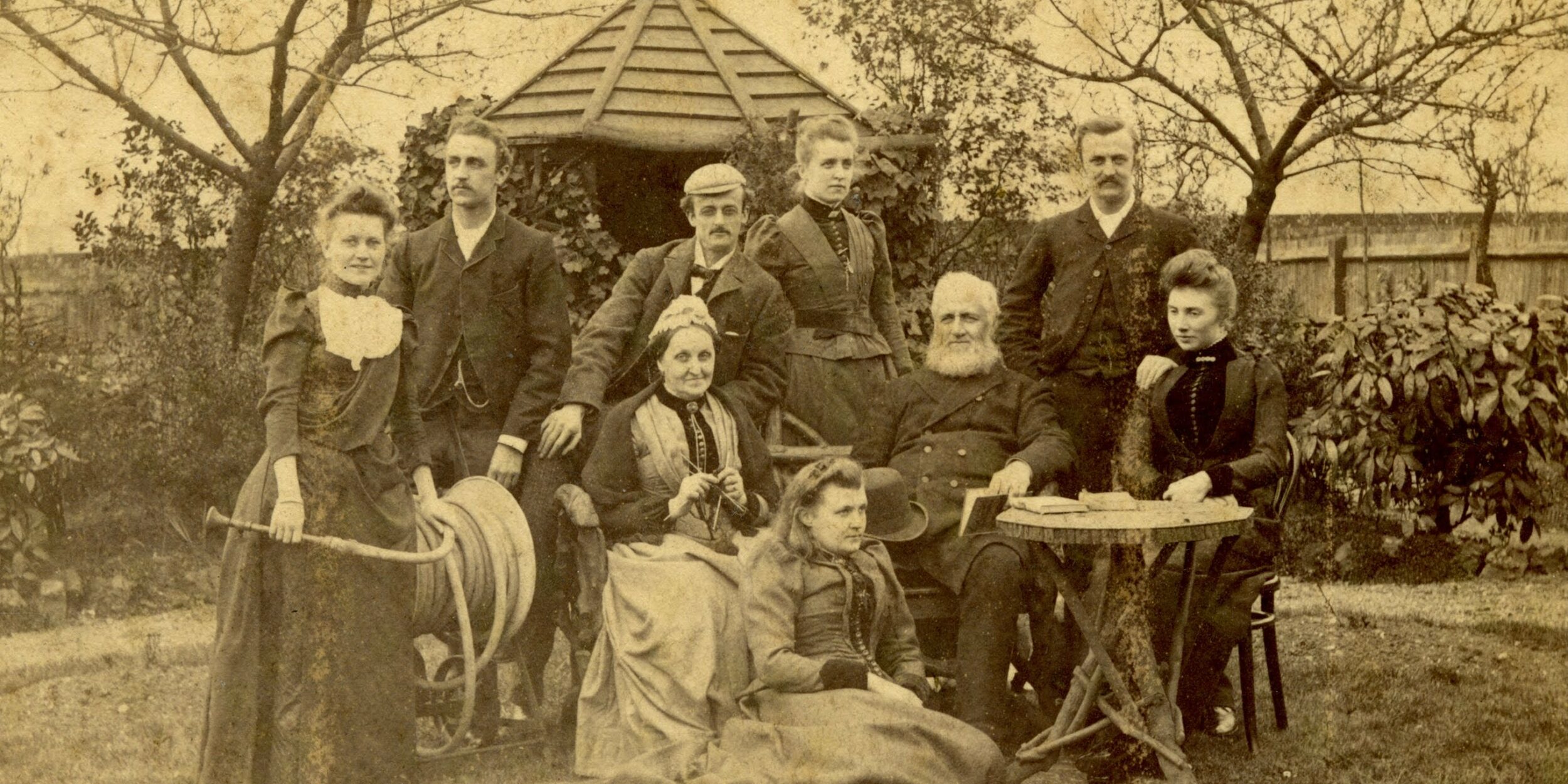By Nathalie Holloway. Nathalie is a doctoral researcher at the Leverhulme Doctoral Scholarships Centre for Water Cultures at the University of Hull, currently on a placement at the Garden Museum.
This year, parts of the UK have been declared to be officially in drought, and hosepipe bans have been in the news. Otherwise known as ‘Temporary Use Bans’ (TUBs), hosepipe bans have been introduced in certain areas by Yorkshire Water, Southern Water, Thames Water and South East Water. These bans are intended to manage water supply during periods when hot and dry weather has reduced the amount of water available for consumption and primarily reduce the peak demand of water usage that occurs during hot weather. Hosepipe bans have been found to reduce water consumption by approximately 10%[1].
Hosepipe bans can disrupt habits of watering gardens, and call into question practices that are taken for granted. These bans, as well as droughts more broadly, can provide moments to think creatively about the ways that we use water as gardeners. Even if you are not under a hosepipe ban (the Garden Museum is not currently), perhaps the hot, dry weather this summer has been a reminder to get a water butt. Or maybe you have started (or continued) using grey water on your plants.
We can also look to watering technologies developed in climates that are generally hotter and drier than ours. For example, the Garden Museum Learning Team ran olla pot making workshops with Queen Elizabeth II Jubilee school and as part of the Clay for Dementia project. These pots are filled with water and then submerged in the ground next to the plants that require watering. The porous walls of the pot allow water to be absorbed by neighbouring plants.

A call to put down the hosepipes is also an opportunity to celebrate our watering cans, of which the Garden Museum has many brilliant examples in its collection. Take, for instance, this Tudor thumb pot in the Garden Museum’s collection.

But when did hosepipe bans begin as a measure used to reduce water consumption during droughts? The history of hosepipe bans goes back further than you might think. Although they were only explicitly mentioned in law in the 1945 Water Act, their use extends before that.
Byelaws enabled water companies to restrict certain types of water usage during the 19th century, such as during the drought of 1895 in East London, when hosepipes and sprinklers were banned and water was supplied intermittently to domestic premises[2]. However, the first formal ‘hosepipe ban’ was implemented London in 1929, and other cities such as Leicester and Liverpool also brought in similar restrictions.
Historians Vanessa Taylor and Frank Trentmann have found that, during the early 20th century, hosepipe bans and calls for economy during droughts came into tension with changes in lifestyle, as more households came to have access to piped, hot water within the home[3]. This was sometimes explicitly referred to by water authorities when requesting consumers to use less water.
For example, during the 1929 drought, an official from Leicester Waterworks commented that ‘So many people have bathrooms in their houses nowadays that the use of water as increased tremendously’. The official also noted that because people ‘bath more frequently, in consequence the demand of water has greatly increased’[4].
As Taylor and Trentmann have argued, the attitude of the water authorities exemplified by this comment was often poorly received by the public, as authorities had been keen to encourage the supply of piped water indoors as a sign of modernity and health. They quote the MP for Durham, J.J. Lawson, who during the 1934 drought, when authorities made similar calls for water conservation, said that he had seen ‘nothing more pathetic, though at the same time somewhat humorous, than the notices on trams to use less water, when we have been taught for years to use more water as a rule of good health’[5].
Although it is important to note that hosepipe bans in the 1920s and 1930s were primarily used in urban areas, as many rural areas in England remained without mains supplied piped water to their houses, let alone the use of a hosepipe. They relied instead on communal pumps, wells, springs, streams and sometimes ditches. The Women’s Institute undertook a survey of 3500 villages in England and Wales in 1944 and found that 1000 did not have piped water supplied to anywhere in their village, and of the 2500 that had piped water supplied to the village, this was often not connected to the house, but instead to a village stand-pipe/ water pump[6].
For example, in rural Oxfordshire, 19% of houses shared a pump, and 12% of households needed to fetch water from further than 60 metres away their homes. The task of collecting water was primarily done by women[7]. Whilst in the 1920s and 30s, the dry hot weather was an opportunity for Londoners to enjoy swims in the lido or splash in fountains, for many villages, droughts remained times of significant hardship. As the supply of mains water to domestic properties expanded, hosepipe bans increasingly became the most common way for domestic water supply to be restricted.
A century later, the landscape of water provision looks very different, but droughts might encourage us to reflect on what we regard as ‘normal’ water usage, and how we might use water differently. As technologies, habits, and values shift over time, some practices can come to seem old-fashioned, but are there ways in which your parents, or previous generations used water that might give pause for thought? As the UK climate becomes increasingly uncertain and extreme, there is a growing need to find ways of using and reusing water imaginatively that suit your growing space, and looking to resourcefulness in the past might be a source of ideas for the future.
—
[1] Waterwise (2022) Taking the public’s pulse on hosepipe bans. https://database.waterwise.org.uk/knowledge-base/taking-the-publics-pulse-on-hosepipe-bans/
[2] Taylor, V. & Trentmann, F. (2008) Hosepipes, history and a sustainable future. History & Policy, 17 July. https://www.historyandpolicy.org/index.php/policy-papers/papers/hosepipes-history-and-a-sustainable-future.
[3] Taylor, V. & Trentmann, F. (2011) Liquid Politics: Water and the Politics of Everyday Life in the Modern City*. Past & Present, 211(1), 199–241.
[4] Leicester Evening Mail, 29th June 1929
[5] Taylor & Trentmann, 2008
[6] O’Hara, G. (2017) The Politics of Water in Post-War Britain. Palgrave Macmillan.
[7] National Federation of Women’s Institutes (1944) National Water and Sewerage Survey.
Image: Family posing on back lawn with one woman holding hose reel, 1895, Garden Museum Collection
